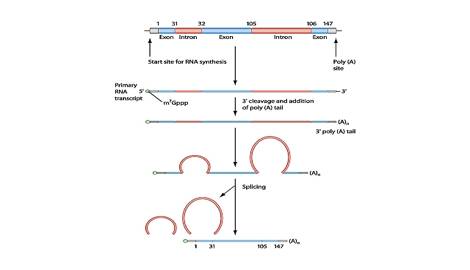Splicing Together the Case for Design, Part 2 (of 2)
One of my favorite movie lines of all time comes from Cool Hand Luke when the captain of the prison guards declares, “What we’ve got here is failure to communicate.”
Because communication is the key to almost any enterprise, failure to do so can have dire consequences. Yet sometimes we want to communicate only with some people but not with others. In these situations, it is helpful to use a code. This often happens in the game of baseball, such as when the third base coach uses a code to send signals to the batter and base runners.
Codes and signals also play an integral part in biochemical system. As I discussed last time, a team of biochemists recently made progress in understanding the signals that constitute the splicing code.1 Their achievement is a significant one. This code, which plays a key role in the expression of genetic information, is extremely confusing and has been difficult for biochemists to grasp in the past.
Last week, I described what splicing entails and briefly touched on how alternate splicing evinces the work of a Creator. This week I’ll discuss researchers’ efforts to decipher the splicing code and show how these new insights also advance the case for biochemical intelligent design.
Gene Splicing
In eukaryotes, splicing occurs after a gene is copied into an mRNA molecule. The intron sequences are excised and the exons spliced together by a protein-RNA complex known as a spliceosome.

Biochemists learned that the spliceosome can splice the same mRNA in different ways to produce a range of functional proteins. This alternate splicing occurs because the spliceosome does not necessarily use all the splice sites. Alternate splicing allows the cell to produce several different proteins from the same mRNA and, ultimately, from the same gene.
The Gene Splicing Code
Researchers had some understanding of the factors that influence alternate splicing. Still, they remained unable to predict which product of the splicing process would form under varying physiological conditions. The problem is that a large number of factors—all stemming from the gene splicing code—operate in conjunction to determine the splicing product. These complex factors include the DNA sequence at the intron-exon boundaries, auxiliary sequences remote from the boundary region, and the location of the auxiliary sequences.
The researchers developed a computer program that uses a vast quantity of existing data on RNA splicing patterns for a wide array of RNA molecules. The data came from a large number of biological sources. The researchers used it to develop a prediction algorithm that, at least in part, uncovered the splicing code. With the splicing code in hand, the biochemists successfully predicted alternative splicing events and even predicted the future discovery of new splice products.
Much more work is needed to fully unravel the splicing code, but the progress made by these researchers sets the stage for biochemists to develop a more fundamental understanding of information harbored in DNA and functionally realized through gene expression.
The Case of Biochemical Intelligent Design
This progress in deciphering the splicing code also strengthens the case for biochemical intelligent design. As I argued in The Cell’s Design, experience teaches us that information and codes stem from the work of a mind. So when we encounter information and codes in biochemical systems—systems foundational for life—it is reasonable to conclude that a divine Mind is responsible for them. In fact, biochemical systems are, at their very essence, information systems with a code, the genetic code, at their very heart.
Remarkably, the genetic code appears to be highly optimized, further indicating design. Equally astounding is the fact that other codes, such as the histone binding code, transcription factor binding code, the splicing code, and the RNA secondary structure code, overlap the genetic code. Each of these codes plays a special role in gene expression, but they also must work together in a coherent integrated fashion.
The existence of multiple overlapping codes also implies the work of a Creator. It would take superior reasoning power to structure the system in such a way that it can simultaneously harbor codes working in conjunction instead of interfering with each other. As I have written elsewhere, the genetic code is in fact optimized to harbor overlapping codes, further evincing the work of a Mind.
As biochemists learn more about the structure and operation of biochemical systems, they uncover clear signs for a Creator’s existence and role life’s origin. Such signals are so powerful that all people are “without an excuse” (Romans 1:20).
| Part 1 | Part 2 |
Endnotes
- Yoseph Barash et al., “Deciphering the Splicing Code,” Nature 465 (2010): 53–59.





